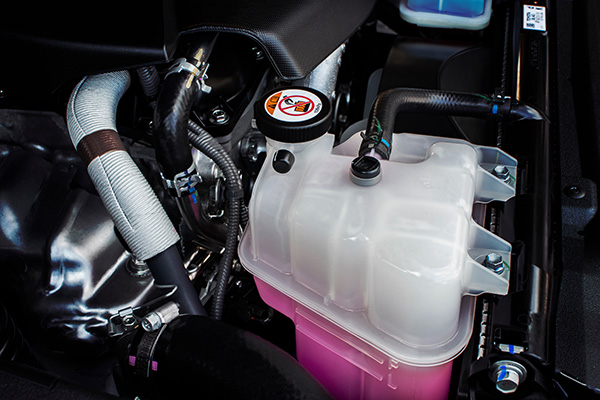
Coolant flushes are one of those services often recommended during routine maintenance visits, but many drivers wonder if they’re truly necessary or just another item on a long list of upsells. Unlike an oil change or brake service, a coolant flush doesn’t always show obvious signs when it’s due. But neglecting it can lead to overheating, corrosion, and even engine failure.
Let’s talk about the coolant flush, why it is important, and how to know when your vehicle really needs one.
What a Coolant Flush Does
Coolant, also known as antifreeze, flows through your engine and radiator to keep operating temperatures stable. It prevents the engine from overheating in the summer and freezing in the winter. Over time, coolant breaks down and becomes less effective. It can also become contaminated with rust, scale, and debris from inside the engine and radiator.
A coolant flush involves completely draining the old coolant, flushing the system with a cleaning solution or water to remove contaminants, and refilling it with fresh coolant that matches your vehicle’s specifications. This is different from a simple drain and fill, which removes only part of the old fluid.
Why It’s Necessary
Old or dirty coolant can lose its ability to regulate temperature. When this happens, your engine becomes more vulnerable to overheating. Contaminants in the coolant can also clog the radiator, water pump, or heater core. If left unchecked, this buildup can cause expensive damage, including warped engine components or head gasket failure.
Most modern engines use aluminum components, which are more prone to corrosion if the coolant isn’t protecting them properly. Fresh coolant contains additives that prevent rust and corrosion. Over time, these additives wear out and leave the system exposed.
How Often Should You Flush the Coolant
Most vehicles need a coolant flush every 30,000 to 60,000 miles, depending on the type of coolant used and the manufacturer’s recommendations. Some long-life coolants may last longer, but it’s still important to inspect the fluid condition regularly.
If your vehicle is frequently driven in extreme temperatures, tows heavy loads, or sits unused for long periods, the coolant may degrade faster and require more frequent replacement. We can test the fluid with a hydrometer or test strip to determine if it still offers proper protection.
Signs Your Coolant Might Be Overdue
Unlike low oil or brake pads, worn-out coolant doesn’t always make noise or cause immediate drivability issues. But there are warning signs to watch for. If your temperature gauge runs hotter than usual, if you notice a sweet smell under the hood, or if you find rust-colored coolant in the reservoir, it’s time to have the system inspected.
Coolant that looks dirty, murky, or has floating particles is another red flag. And if your vehicle has been overheating or losing coolant regularly, a flush could be part of the solution.
What Happens if You Skip It
Ignoring a needed coolant flush won’t cause immediate failure in most cases, but it can lead to serious engine damage over time. Sludge and contaminants can cause poor circulation, while degraded coolant fails to protect against corrosion. The result could be a damaged radiator, a stuck thermostat, or worse, a blown head gasket.
Compared to the cost of a major repair, a coolant flush is a simple and affordable way to protect your investment.
Euro Car Tech – Cooling System Service in Arlington, TX
At Euro Car Tech in Arlington, we believe in proactive maintenance that keeps your vehicle running at its best. If your coolant is due for replacement, or if you’re not sure when the last flush was done, we’ll inspect the system, test the fluid, and recommend the best next step. A coolant flush may not be flashy, but it could save you thousands in repair bills.
Schedule your service today and keep your engine protected for the long haul.